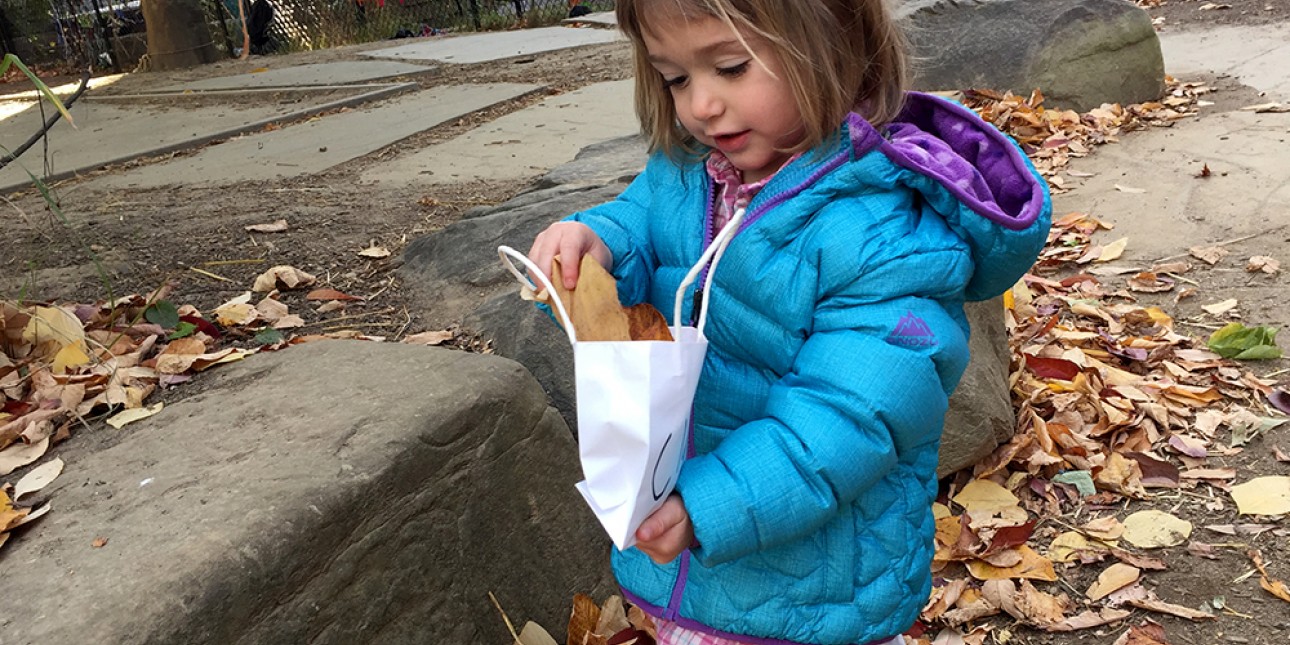In the Classroom: The Rainbows

written by Rainbows Lead Teacher Joanne Browley
Loose Parts, Provocations, Oh My!
Completing a Reggio-inspired training recently has peeked my curiosity and professional hunger for something new and exciting. The training was called Loose Parts, Provocations, Oh My! and it triggered my own early childhood memories of using sticks, stones, seeds, and leaves as the only materials or toys available.
I recalled going into Mr. Hughe’s garage and getting into the buckets of oil tinged screws, as well as playing in the curly shavings after my dad used his sharp tools on fresh cut wood.
I took away from the training that for young children loose parts support inquiry-based learning. Working with them honors children’s interests. When children touch them, meaning happens.
There are seven different types of loose parts.
- Natural or Nature-Based Materials
These are sticks, minerals, leaves, petals and the list goes on. It is no doubt that nature inspires a deep appreciation for beauty, textures, and organization. Rainbows treat natural materials like treasures, securing them in their pockets, or proudly bringing them to and from school.
- Plastics
In our classrooms we have collected the tops of fruit packs and plan to hold a plastic drive for specific plastics that we use every day.
- Glass and Ceramics
Working with breakable loose parts allows children to develop self-control and practice moving more carefully. Glass reflects light and the colors can provoke children’s interest in patterns.
- Metal
We saved all the pieces of our old blinds to begin a metal loose parts collection. Ultimately, we imagine all the shades of silver, copper and gold and the possibilities working with various shaped metals and screws.
- Wood Reuse
Tree cookies are definitely a favorite in the Rainbows. A splice of wood, usually circular that they can carry, count with, or even roll. Recently they used tree cookies as part of an obstacle course surface. They enjoyed walking barefooted on textured beams, soft mats and the sturdy warmth of the wood.
- Packaging
Teachers observed the delight the Rainbows derive from running over the long green bubble wrap in our classroom. The Rainbows have jumped with shoes on and off. They have used packaging for printing and squeezing.
- Fabrics
Rainbows dance to the fire truck song with scarves and use them as steering wheels for their fire trucks. They dress up with them and cover themselves when playing ‘Who’s Under the Blanket.’
This autumn, the Rainbows have been working with natural materials in and out of the classroom. Rainbows made natural art by gluing leaves, branches, pinecones and acorns onto paper. Rainbows each brought bags outside to collect leaves and even brought the bags back the next day with leaves they collected from around their homes or walk to school.
In the classroom we have used pinecones to tell natural stories. Children held them gently as babies and sang lullabies. They listened eyes wide, to a story, as the pine cones were used to represent each Rainbow and their teachers.
We are just at the cusp of learning about loose parts and look forward to using them daily in our classroom invitations and provocations.